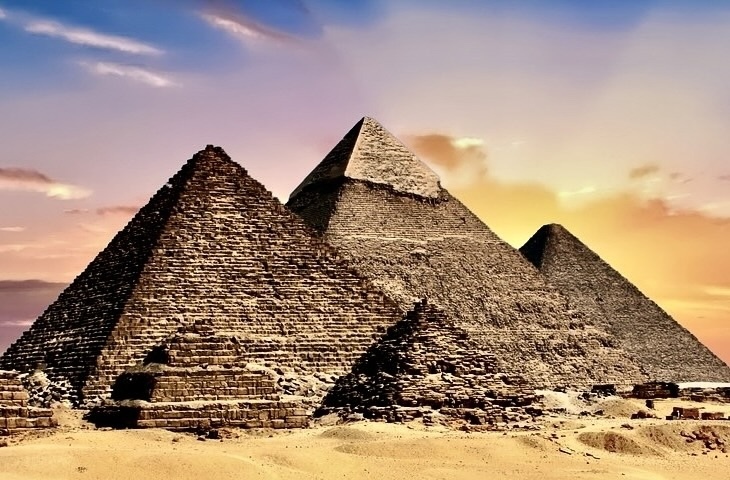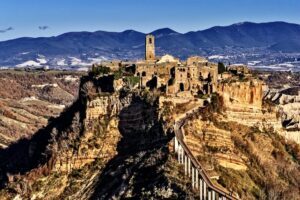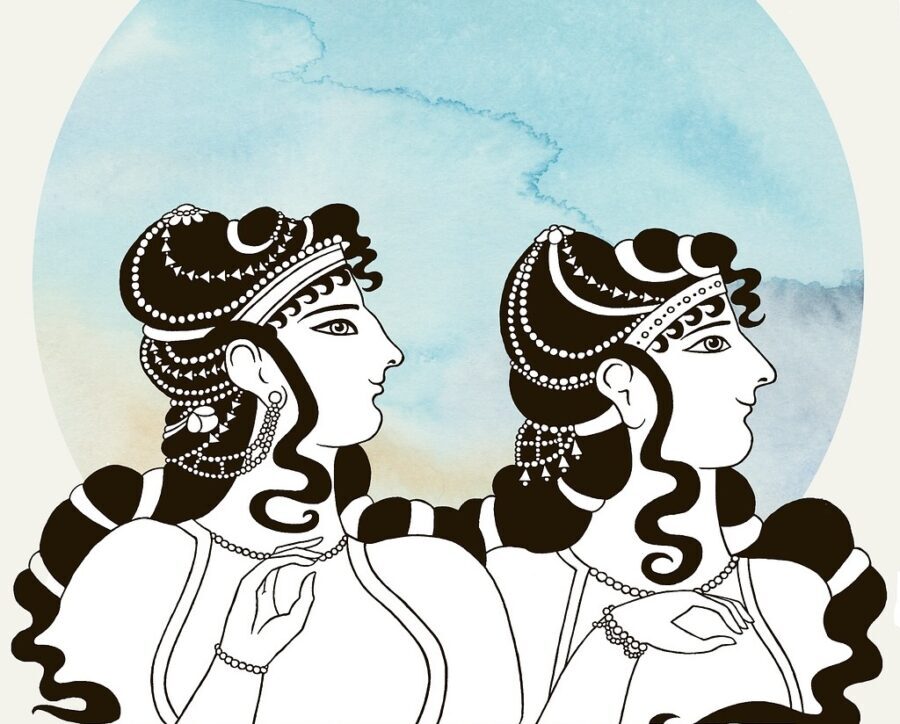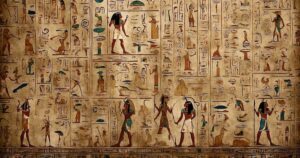
Richard Marranca interviews archaeologist Dr. Kelly Accetta Crowe. Kelly has a BA in Archaeology and Art History from the University of Virginia, a Master of Philosophy in Egyptology and a Ph.D. in Archaeology from the University of Cambridge. Thresholds of the Gods: Doorways and Movement in New Theban Temples was the title of her dissertation. During the time she worked on her doctorate, she spent time in Luxor studying sites. Kelly has worked on the Middle Kingdom Theban Project. She has also excavated with the Amarna Project, the New Kingdom Research Foundation, and the Deep History of the Asyut Region project (The British Museum). She has worked for the Headstone Manor & Museum and the British Museum. Her main areas of interest are stone built architecture, funerary material culture, art, and the connection between image and power.
The following is the substance of that interview….
___________________________________________
RM (Richard Marranca): What is heka, and was it involved in the creation of the world?
KC (Kelly Accetta Crowe): Heka was a divine creative force. It lived in the bellies of the gods, and its power brought divine thought or words into reality. It was used to create the universe and also to maintain ma’at, the concept of balance, truth, and justice. Humans did not inherently have heka, but it could be channeled by those who had access to divine knowledge on the working of heka.
RM: Can you tell us the purpose of creation stories to the ancient Egyptians? And what are the sources of these creation stories?
KC: This begs the question, what is the purpose of creation stories in any culture? I think we can really only say that these narratives explained things seen in the world around them, and also the power of the gods, particularly the major city gods around which most of the myths were built. Whether Egyptians believed them verbatim, saw them as metaphors, fiction, etc. is impossible to know and, like today, levels of belief probably also varied amongst the population.
The creation myths are alluded to (earlier in history) or written out in full episodes (later in history) on literary papyri, statues, temple walls, etc. However, we never see the creation of a ‘scripture’ like in modern monotheistic religions, or any form of standardized texts which were used across Egypt.
RM: The Hermopolitan cosmology arose at the site of Hermopolis. Can you tell us about the story and the city? Is this an interesting place to visit? Can you tell us about a favorite excavation here?
KC: The provincial capital of Hermopolis was called Khemenu, from the word for eight, khemen. The Hermopolitan myth speaks of four pairs of gods which form the basis of creation. The gods were originally lost in the waters of nothingness, and when they came together, the upheaval formed the mound upon which the sun emerged, and life began.
Hermopolis later became the seat of the god Thoth. This is where the city got its Greek name, Thoth = Hermes = Hermopolis (city of Hermes). It became a vibrant and important city during the Roman period.
___________________________

Hermopolis Basilica. Roland Unger, CC BY-SA 3.0, Wikimedia Commons
___________________________
The British Museum excavated at the site in the 1980s, both documenting previously unpublished excavations performed by other teams as well as uncovering new material. The publications include information on the pharaonic temple to Thoth, later Roman sites of worship, Coptic churches, part of the town dating to the Third Intermediate Period, and cemeteries dating to the First Intermediate Period.
RM: Why is the sun central to Egyptian religion? Can you tell us about the Heliopolitan Ennead? And can you tell us about Heliopolis?
KC: The sun, along with the Nile, was considered the main life-granting force in ancient Egypt. The first sunrise was said to occur at the moment of creation. Heliopolis (Greek ‘City of the Sun’), was the location of a major dual temple to the creator god Atum and the sun god Ra, often seen syncretized as Atum-Ra. Unfortunately, little remains today except a beautiful obelisk.
The creation myth of this city focused on the birth of nine gods – Atum (Atum-Ra), Shu, Tefnut, Geb, Nut, Osiris, Isis, Seth, and Nephthys – hence the term Ennead, meaning ‘the nine’. The gods correspond to the creation of the parts of the world, particularly Shu (air), Tefnut (moisture), Geb (earth), Nut (sky). This myth was one of the most prevalent in Egypt, and the gods featured in it played major roles in the religious, magical, and political landscape.
_____________________________
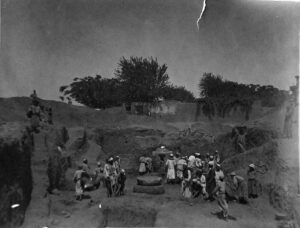
Workers excavating in the Temple of Mnevis. In the foreground there is an open trench in the temple’s floor. Angelo Sesana Archive. CC0 1.0 Universal, Wikimedia Commons
_____________________________
RM: I recall that Memphis was created by the first pharaoh, Menes, and that it had its creation story – or Memphite Theology. Can you tell us about the story? Can you tell us about this early capital and any great excavations you’d like to add?
KC: In this story, Ptah, god of craftsmen, speaks the world into existence. His heart (seat of intelligence) thinks of an idea, which he utters aloud. His heka causes these words to come into existence as hieroglyphs and all elements of the world around him.
____________________________
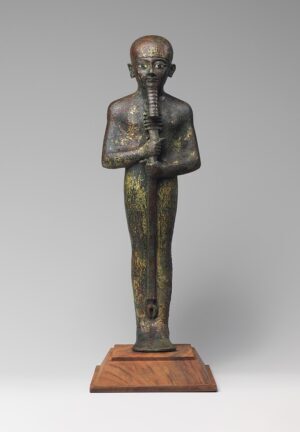
Statue of the God Ptah. CC0 1.0 Universal, Wikimedia Commons
____________________________
Much of the exploration of Memphis focuses on the surviving elements of the large temples to Ptah erected by the kings of the New Kingdom and later. The most famous part of Memphis is its necropolis, located in what is today called Saqqara.
RM: Could you tell us how temples are a microcosm of the cosmos and how their rituals and artwork regenerated the cosmos – kept it going?
KC: The physical structure of a temple was said to echo the early universe. At the heart of the temple was the dark enclosed sanctuary which held the god’s statue upon the raised mound of creation. The large papyrus-columned courts evoked the early marshlands, and great horizon-shaped gates aligned with the east/west axis represented the cyclical nature of the rising and setting of the sun. Daily and annual rituals performed within the temple aimed to placate the god, and thus ensure that cosmic balance (ma’at, in Egyptian) was maintained. The artwork depicted these very rituals, which magically ensured their correct performance for all eternity.
_______________________________
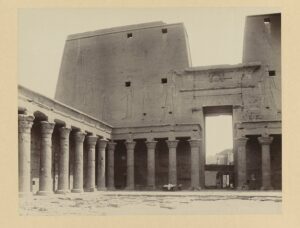
Edfu Temple. CC0 1.0 Universal, Wikimedia Commons
____________________________
RM: Are other gods (aside from the major creation stories) also creator gods? Can I ask you about the Amarna Revolution from Akhenaten? How was the Aten involved in creation? Did Akhenaten (and Nefertiti) have a role in creation?
KC: There are many snippets of myths which suggest that most ‘city’ gods had a form of creation story. The Aten was credited with all creation, from the rain of foreign lands to the first breath of babies. This is documented in the Great Hymn to the Aten. The Hymn also states that the Aten apprised Akhenaten of its designs. It’s clear that the Aten was alone at the moment of creation, but Akhenaten was involved in maintaining the world created by the Aten.
____________________________
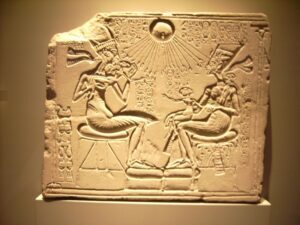
Akhenaten, Nefertiti and Daughters. Egyptian Museum, Berlin. Public Domain, Wikimedia Commons
____________________________
RM: Does Tut’s Tomb have creation stories?
KC: Not as such. On the golden wooden shrines which surrounded the sarcophagus, there are excerpts from Chapter/Spell 17 of the Book of the Dead. This very enigmatic passage includes allusions to the Heliopolitan creation myth, but not in narrative form.
____________________________
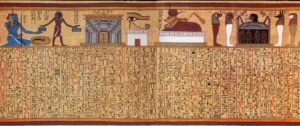
Book of the Dead spell 17 from the Papyrus of Ani. Public Domain, Wikimedia Commons
____________________________
Cover Image, Top Left: TheDigitalArtist, Pixabay

